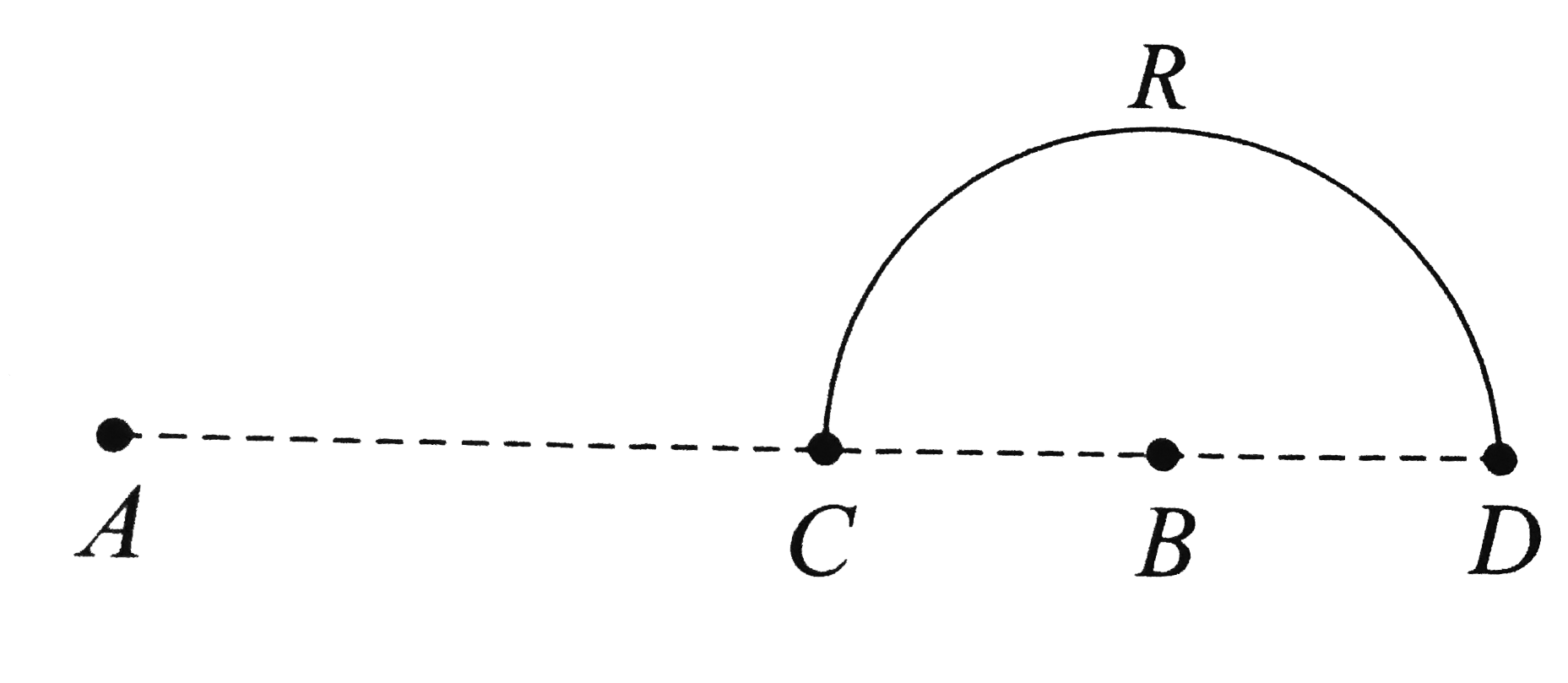The work done to move a charge along an equipotential from A to B
cannot be defined as −∫BAE.dl
must be defined as −∫BAE.dl
is zero
can have a non-zero value
The correct Answer is:C
To solve the problem of finding the work done to move a charge along an equipotential surface from point A to point B, we can follow these steps:
1. Understanding Equipotential Surfaces:
- An equipotential surface is a surface on which the electric potential is constant. This means that the potential at any point on the surface is the same.
2. Identifying the Electric Potential:
- Let VA be the electric potential at point A and VB be the electric potential at point B. Since both points are on the same equipotential surface, we have:
VA=VB
3. Work Done Formula:
- The work done W in moving a charge Q from point A to point B is given by the formula:
W=Q(VB−VA)
4. Substituting the Values:
- Since VA=VB, we can substitute this into the work done formula:
W=Q(VB−VA)=Q(VA−VA)=Q⋅0
5. Conclusion:
- Therefore, the work done W to move the charge along the equipotential surface from A to B is:
W=0
Final Answer:
The work done to move a charge along an equipotential surface from A to B is zero.
---
- An equipotential surface is a surface on which the electric potential is constant. This means that the potential at any point on the surface is the same.
- Let VA be the electric potential at point A and VB be the electric potential at point B. Since both points are on the same equipotential surface, we have:
VA=VB
- The work done W in moving a charge Q from point A to point B is given by the formula:
W=Q(VB−VA)
- Since VA=VB, we can substitute this into the work done formula:
W=Q(VB−VA)=Q(VA−VA)=Q⋅0
- Therefore, the work done W to move the charge along the equipotential surface from A to B is:
W=0
The work done to move a charge along an equipotential surface from A to B is zero.
Topper's Solved these Questions
- ELECTROSTATIC POTENTIAL AND CAPACITORSBOOK - DC PANDEY ENGLISHCHAPTER - ELECTROSTATIC POTENTIAL AND CAPACITORSEXERCISE - Check point 2.3
15 Videos
- ELECTROSTATIC POTENTIAL AND CAPACITORSBOOK - DC PANDEY ENGLISHCHAPTER - ELECTROSTATIC POTENTIAL AND CAPACITORSEXERCISE - Check point 2.4
15 Videos
- ELECTROSTATIC POTENTIAL AND CAPACITORSBOOK - DC PANDEY ENGLISHCHAPTER - ELECTROSTATIC POTENTIAL AND CAPACITORSEXERCISE - Check point 2.1
15 Videos
- ELECTROMAGNETIC WAVESBOOK - DC PANDEY ENGLISHCHAPTER - ELECTROMAGNETIC WAVESEXERCISE - Sec C
22 Videos
- ELECTROSTATICSBOOK - DC PANDEY ENGLISHCHAPTER - ELECTROSTATICSEXERCISE - Medical entrances gallery
37 Videos
Similar Questions
STATEMENT-1 : Work done to move a charge on the surface of metal solid charged cylinder is always zero.
and
STATEMENT-2 : Work done to move a charge on an equipotential surface is zero.
View SolutionA charge of 5μC is placed at the center of a square ABCD of side 10cm. Find the work done (inμJ) in moving a charge of 1μC from A to B.
View Solution
Knowledge Check
The work done to move a unit charge along an equipotential from P to Q
Amust be defined as −Q∫P→E.→dlBis zeroCcan have a non-zero valueDboth (a) and (b)are correct
A uniform electric field E exists between two oppositely charged plates (Fig. 3.38). What will be the work done in moving a charge q along a closed rectangular path ?
 .
.
View SolutionAssertion : No work is done in moving a charge along equatorial line.
Reason : The electric potential is everywhere zero on the equatorial line of a dipole.
View SolutionAn infinite line of charge λ per unit length is placed along the y-axis. The work done in moving a charge q from A(a,0) to B(2a,0) is
View SolutionCharges +q and −q are placed at points A and B respectively which are a distance 2L apart, C is the midpoint between A and B. The work done in moving a charge +Q along the semicircle CRD is

View SolutionCharge q2 is at the centre of a circular path with radius r. work done in carrying charge q1 once around this equipotential path , would be
View SolutionThe work done in moving an electric charge q in an electric field does not depend upon
View SolutionThere is an electric field E in x-direction. If the work done on moving a charge of 0.2C through a distance of 2 m along a line making an angle 60∘ with x-axis is 4 J, then what is the value of E?
View Solution
